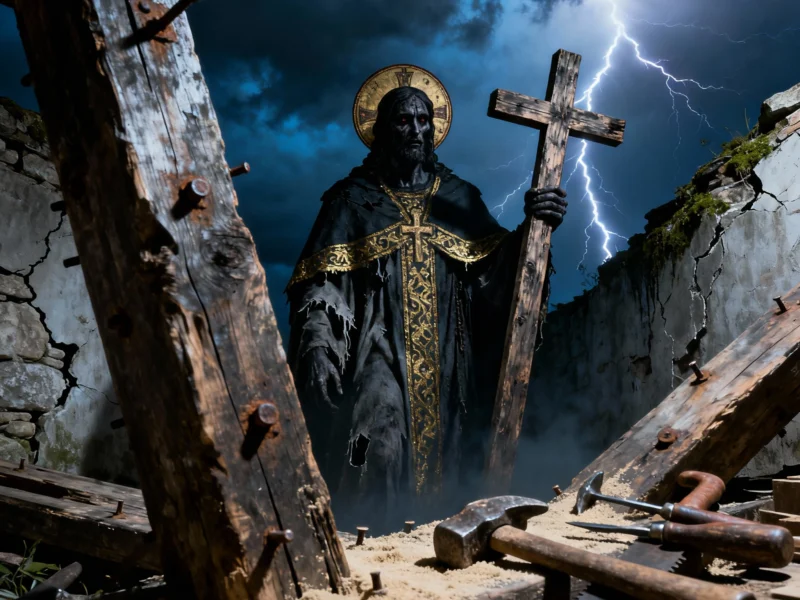IDW Publishing’s new comic series “The Last Starship” delivers a gripping exploration of two major plotlines modern Star Trek television abandoned. Set during the catastrophic “Burn” event in the 31st century, the series follows surviving Starfleet officers as they confront the collapse of galactic civilization while forging an unlikely alliance with a reformed Borg collective led by Agnes Jurati.
The Immediate Aftermath of The Burn
“The Last Starship” opens during Starfleet’s golden age, mere moments before catastrophe strikes. The USS Sagan, named for astronomer Carl Sagan, is on the verge of achieving the Federation’s ultimate diplomatic triumph—convincing the Gorn to become the final species joining the galactic alliance. This represents the pinnacle of Star Trek’s utopian vision, a society without external conflict that the franchise has championed for nearly six decades.
The comic’s creative team—writers Jackson Lanzing and Collin Kelly with artists Adrian Bonilla and Heather Moore—masterfully contrasts this peak achievement with sudden devastation. When the Burn occurs, it instantly destroys the Sagan alongside hundreds of thousands of ships across the galaxy. Unlike Star Trek: Discovery’s treatment of the event, which jumped ahead to a stabilized post-Burn era, “The Last Starship” immerses readers in the raw, immediate horror of civilization’s collapse. Captain Delacourt Sato and three bridge officers become key figures in coordinating a response to what amounts to the near-total destruction of interstellar society.
Borg Jurati’s Unexpected Return
As Starfleet’s remnants convene on Earth, they receive an unexpected visitor: Agnes Jurati, last seen in Star Trek: Picard’s second season as the ambassador of a reformed Borg collective. Her arrival represents the comic’s second major engagement with modern Trek’s unexplored potential. Jurati’s Borg cooperative offers to help Starfleet build a new flagship using transwarp technology rather than dilithium-based systems, presenting a radical alternative to conventional Federation propulsion.
This development directly addresses one of modern Trek’s most significant missed opportunities. When Picard transitioned from its second to third season, it abandoned the bold concept of a peaceful Borg faction potentially joining the Federation—a narrative leap comparable to The Next Generation’s transformation of Klingons from enemies to allies. Jurati’s cooperative operates with ambiguous motives: while ostensibly helping Starfleet uphold its ideals during crisis, the comic hints at longer-term objectives that may not align perfectly with Federation values.
The Resurrection of James T. Kirk
Jurati’s assistance comes with a surprising price: access to James Kirk’s preserved blood sample at Daystrom Station. Using advanced Borg nanites, she creates not a clone or memory reconstruction, but the actual Kirk in his prime—complete with memories and consciousness as if his death in Star Trek Generations never occurred. This resurrection carries both hopeful and horrifying implications for the Federation’s future.
As Jurati explains, this moment requires Kirk’s particular talents—a frontier diplomat who fought for the Federation’s future rather than resting on past achievements. However, the method raises ethical questions about Borg manipulation of one of Starfleet’s most revered figures. The comic presents this resurrection as both necessary and unsettling, reflecting broader themes about sacrificing principles during existential crisis. Kirk’s return represents both hope for galactic recovery and concerns about the means justifying the ends.
Building a New Star Trek Narrative
“The Last Starship” concludes its first issue by positioning the newly assembled USS Omega—a hybrid of salvaged Starfleet ships and Borg technology—against Klingons exploiting the Burn’s chaos to return to warrior traditions and eliminate Starfleet permanently. This setup allows the series to explore how familiar Star Trek elements transform under extreme duress while mining potential from recent television developments.
The comic’s strength lies in its willingness to sit with the horror of civilization’s collapse rather than rushing toward solutions. As writers Lanzing and Kelly explained, they wanted to explore “what happens when the people who represent hope lose hope themselves.” This approach distinguishes “The Last Starship” from television treatments of similar concepts, allowing deeper examination of how ideals withstand ultimate tests.
References:



